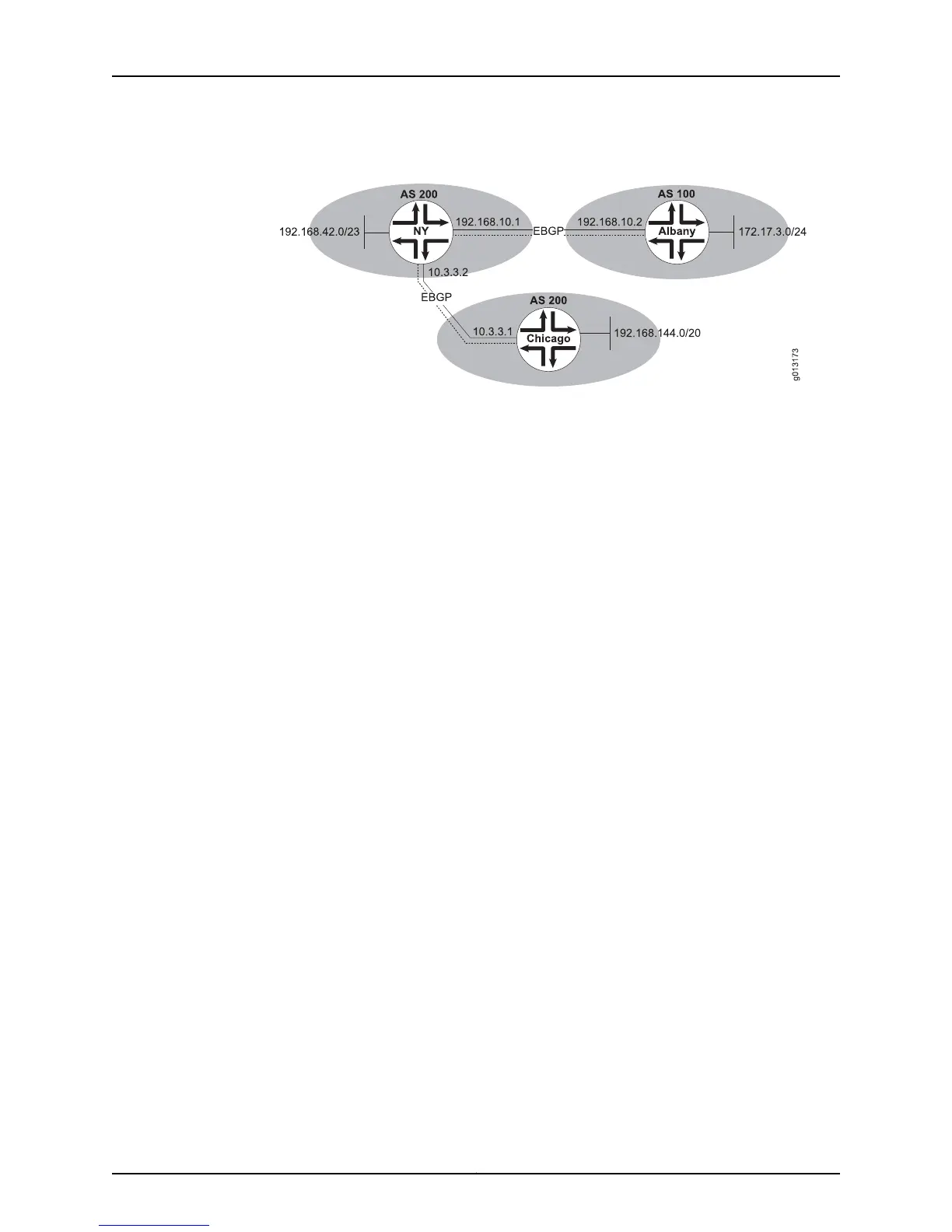Figure 15: Advertising a Default Route
To configure router NY:
host1(config)#router bgp 200
host1(config-router)#network 192.168.42.0 mask 255.255.254.0
host1(config-router)#neighbor 10.3.3.1 remote-as 300
host1(config-router)#neighbor 192.168.10.2 remote-as 100
host1(config-router)#neighbor 192.168.10.2 default-originate
You can also specify a route map to modify the attributes of the default route. If the
default route does not match the route map, then the default route is not advertised.
Redistributing Default Routes
By default, the redistribute command does not permit a default route to be redistributed
into BGP. You can use the default-information originate command to override this
behavior and permit the redistribution of default routes into BGP.
default-information originate
• Use to enable the redistribution of default routes into BGP.
• Use the route-map keyword to specify outbound route maps to apply to the default
route. The route map can modify the attributes of the default route.
• This command takes effect immediately. However, if the contents of the route map
specified with this command change, the new route map may or may not take effect
immediately. If the disable-dynamic-redistribute command has been configured, you
must issue the clear ip bgp redistribution command to apply the changed route map.
• Outbound policy configured for the neighbor (using the neighbor route-map out
command) is applied to default routes that are advertised because of the
default-information originate command.
• Policy specified by a route map with the default-information originate command is
applied at the same time as the policy for redistributed routes, before any outbound
policy for peers.
• Example
host1(config)#router bgp 100
host1(config-router)#default-information originate
Copyright © 2010, Juniper Networks, Inc.56
JunosE 11.2.x BGP and MPLS Configuration Guide

